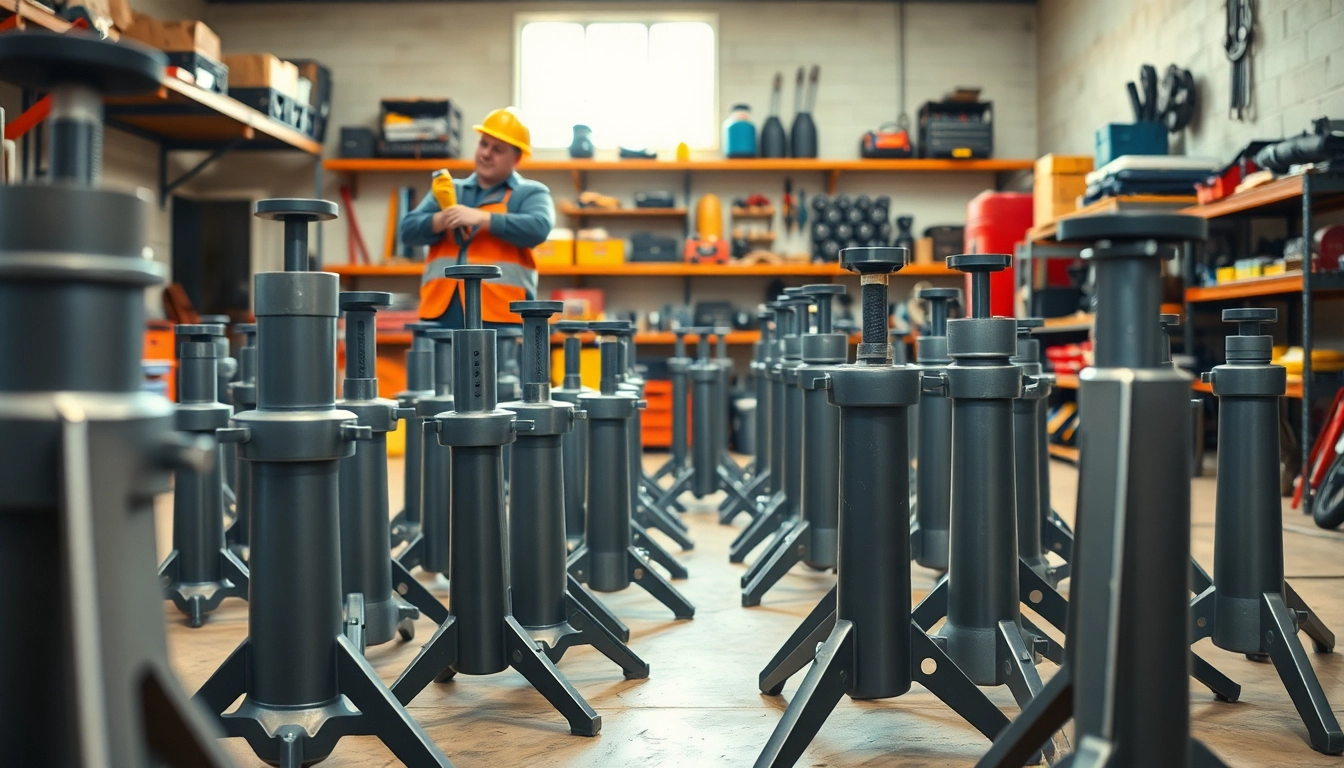Introduction to Pipe Stands
Pipe stands are essential tools in various industries, particularly in construction, plumbing, and metal fabrication. These products are designed to support and elevate pipes during operations such as cutting, welding, and installation. Their utility and versatility make them invaluable tools for professionals who handle pipes of different materials and dimensions. Understanding the functionality and application of pipe stands can greatly enhance the safety and efficiency of your projects.
What are Pipe Stands?
Pipe stands are adjustable supports that hold pipes at specified heights. They come in various configurations, designed to stabilize pipes during operations such as welding and cutting. These stands can accommodate a wide range of pipe sizes and weights, providing practical solutions to common challenges faced in both industrial and construction environments.
Types of Pipe Stands
There are several types of pipe stands available in the market, tailored to meet different industrial needs:
- Fixed Pipe Stands: These have a predetermined height and are designed for stability and strength over movement. They are ideal for permanent installations.
- Adjustable Pipe Stands: These allow users to modify the height according to the specified requirements, making them versatile for various tasks.
- Pipe Jacks: These have a mechanical lift mechanism that can elevate the pipe smoothly and securely, often used in scenarios that require significant height adjustments.
- Roller Stands: Designed with wheels, these stands facilitate mobility, making them practical for moving pipes from one location to another.
Key Features and Benefits
When choosing pipe stands, it’s essential to consider key features that enhance their usability:
- Weight Capacity: Most pipe stands are rated to support a specified weight, which is critical for ensuring safety during operation.
- Height Adjustment Mechanism: Features such as pin locks or hydraulic lifts allow precise and secure height adjustments.
- Material Construction: Quality pipe stands are typically made from robust materials like steel, ensuring durability and resistance to wear and tear.
- Portability: Some models come with wheels or are foldable, allowing for easy transport and storage when not in use.
Choosing the Right Pipe Stand
Factors to Consider
Selecting the right pipe stand involves evaluating several critical factors:
- Type of Work: The nature of the job dictates the type of pipe stand needed. For stationary tasks, fixed stands suffice, while adjustable stands are better suited for dynamic tasks.
- Pipe Size and Weight: It’s crucial to know the dimensions and weight of the pipes you’ll be working with to choose a stand that can accommodate them without risk of failure.
- Work Environment: Consider whether the setting is indoors or outdoors, which can influence the material choice and design of the stand.
- Budget: Price varies significantly across models and brands, so evaluate your budget against the essential features you require.
Load Capacity and Height Adjustment
The load capacity of a pipe stand is a pivotal consideration. Stands are rated by how much weight they can safely support—this typically ranges from several hundred to several thousand pounds. It’s advisable to select stands that exceed your maximum expected load for safety.
Height adjustment is equally important; most stands feature mechanisms to allow adjustments from around 24 inches to over 50 inches. Ensuring that the stand can cater to the specific height requirements of your project can facilitate efficient workflow and prevent occupational hazards.
Best Brands and Models
Some of the most reputable brands in the market include:
- Sumner: Known for high-quality, durable pipe stands suitable for heavy industry.
- Ridgid: Offers innovative solutions with a focus on longevity and performance, perfect for plumbing professionals.
- B&B Pipe: Renowned for manufacturing a comprehensive range of industrial tools, including reliable pipe jacks and stands.
- VEVOR: Provides cost-effective options without compromising on quality, making them favorable for budget-conscious buyers.
How to Use Pipe Stands Effectively
Setup Guidelines
Setting up pipe stands correctly is essential to ensure safety and effectiveness:
- Choose Appropriate Location: Place the pipe stand on a stable surface to prevent tipping.
- Adjust Height: Ensure that the stand is adjusted to the necessary height before positioning the pipe.
- Secure the Pipe: Once the pipe is positioned, use clamps or other securing devices to further stabilize it.
- Check Stability: Before proceeding with operations, check that the stand supports the weight securely and is stable.
Safety Best Practices
Practicing safety is non-negotiable in any work environment, especially when handling heavy and potentially dangerous materials. Here are some essential safety tips:
- Avoid exceeding the weight limit of the pipe stand.
- Always check the stability before starting any work.
- Use personal protective equipment (PPE) such as gloves, safety glasses, and steel-toed boots to prevent injuries.
- Ensure proper training in the use of equipment for all personnel involved in the operation.
Maintenance Tips
Proper maintenance extends the lifespan of pipe stands and ensures ongoing reliability. Here are essential maintenance practices:
- Regular Inspections: Check for signs of wear or damage regularly.
- Clean After Use: Remove debris and any dirt that may have accumulated post-use.
- Lubrication: Ensure that adjustable mechanisms are adequately lubricated to prevent rust and facilitate smooth adjustments.
Applications of Pipe Stands
Welding and Fabrication Tasks
In welding and metal fabrication, pipe stands provide crucial support for pipes while welders work on them. By properly securing pipes at the right height, welders can achieve optimal angles for their work, which enhances precision and reduces the strain on the welder’s body.
Plumbing and Pipe Installation
In plumbing, the installation often requires multiple pipe configurations at varying heights. Adjustable pipe stands allow plumbers to align pipes accurately and support fixtures while making necessary connections, ensuring a seamless installation that adheres to local codes and standards.
Heavy Equipment Support
Heavy equipment often requires temporary support during maintenance and repairs. Pipe stands can stabilize lines and components to facilitate safe working conditions and enhance efficiency when technicians are performing thorough checks and replacements.
Frequently Asked Questions about Pipe Stands
What is the purpose of a pipe stand?
A pipe stand is a tool used to support and elevate pipes during operations like cutting, welding, or assembling. Typically adjustable, these stands accommodate different pipe sizes, weights, and job conditions.
How strong of jack stands do I need?
Typically, jack stands are rated in tons, and it’s advisable to use stands that can handle at least half the weight of your vehicle or pipe, as you’ll usually be lifting one side at a time. For most standard applications, stands with a capacity of 2 to 3 tons are sufficient.
What are the different sizes of pipe stands available?
Pipe stands come in various sizes ranging from portable models that adjust from 24 inches to 30 inches, to taller models that extend up to 60 inches or more. The choice of size should align with the specific requirements of your projects.


